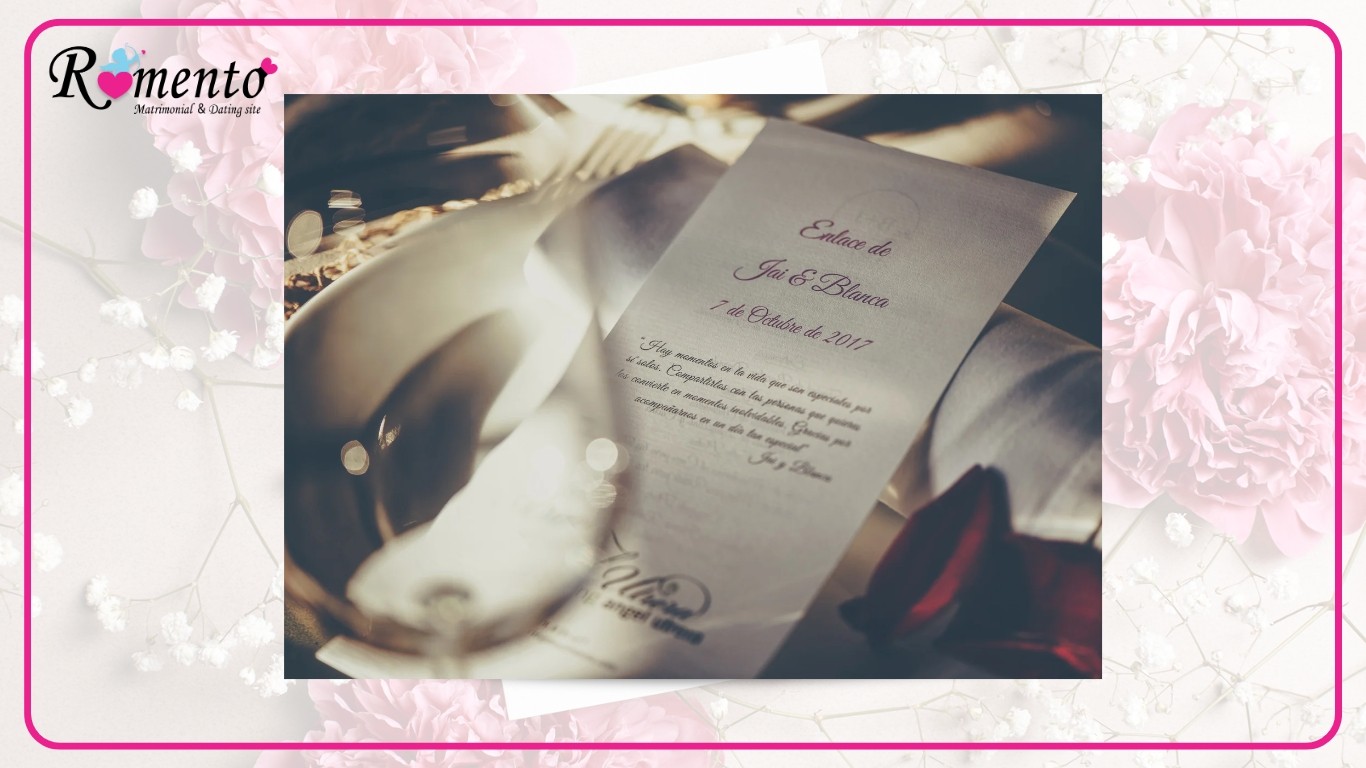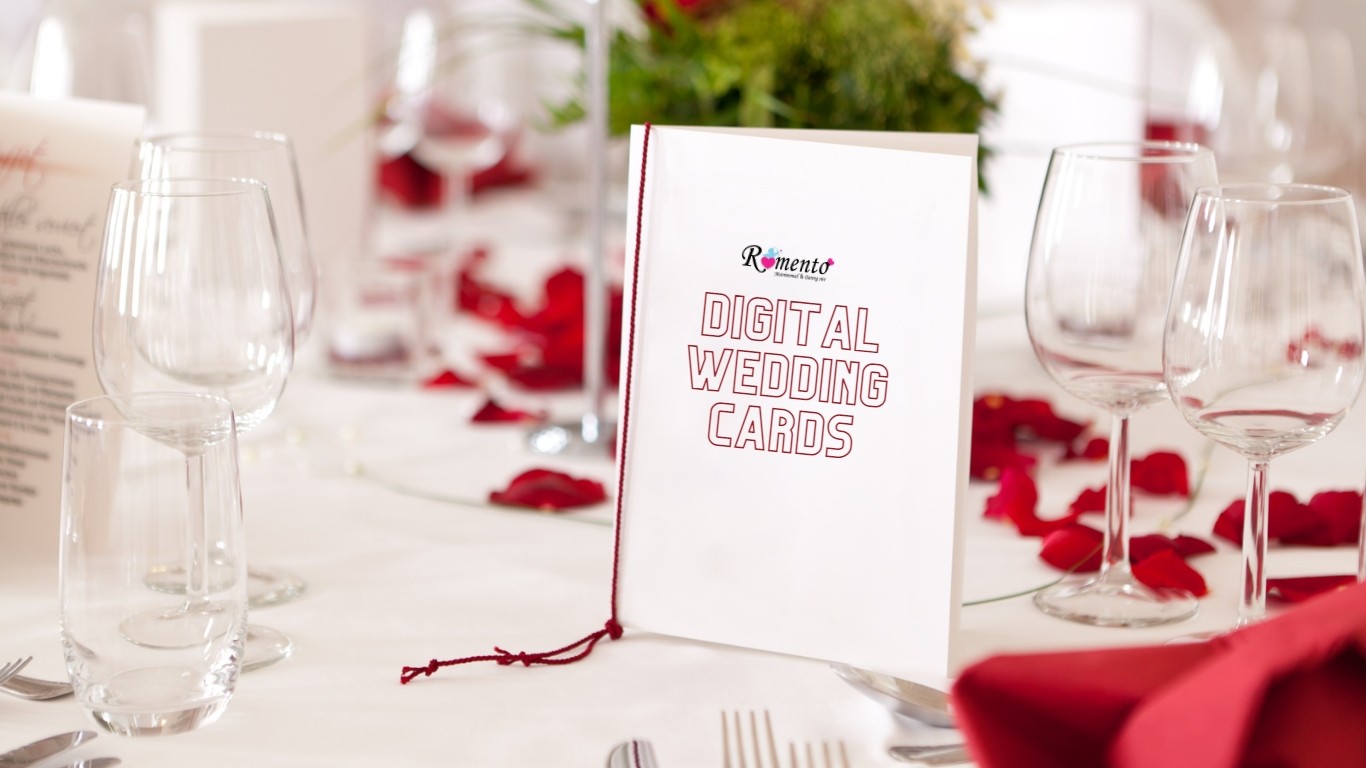
Embracing Digital: Indian Wedding E-Invitations
The Shift to Digital Invitations

In
today's digital age, there has been a significant shift in the way we
communicate and celebrate special occasions. This is especially true in the
realm of Indian weddings, where traditional customs and modern technology are
blending seamlessly. One such innovation that has gained immense popularity is
the use of digital invitations. Gone are the days of printed cards and physical
mailings; now, couples are embracing the convenience, creativity, and
eco-friendliness of digital wedding invitations.
With
just a few clicks, couples can design and send stunning e-invitations to their
guests, setting the tone for their wedding celebrations and reflecting their
unique style and personality. This transition from traditional to digital
invitations not only keeps up with the fast-paced digital world but also adds a
touch of modernity to the age-old Indian wedding customs.
Importance of Wedding Invitations
In
Indian culture, wedding invitations hold great significance and are considered
an essential part of the wedding preparations. They serve as a formal
announcement of the upcoming nuptials and play a crucial role in conveying the
couple's joy and inviting guests to be a part of their special day. Wedding
invitations in India are not merely a piece of paper but a reflection of the
couple's heritage, values, and social standing.
Advantages over Traditional Invitations
E-invitations
offer several advantages over traditional printed invitations, making them a
preferred choice for many couples. Here
are some key advantages:
A.
Cost-effectiveness: E-invitations eliminate
the need for printing, paper, and postage costs associated with traditional
invitations. This can result in significant savings, especially for large
wedding guest lists. Couples can allocate their budget to other aspects of
their wedding or even opt for more elaborate designs or features in their
e-invitations without worrying about increased costs.
B.
Eco-friendly: By choosing e-invitations, couples
contribute to environmental sustainability by reducing paper waste and
minimizing their carbon footprint. This aligns with the increasing global focus
on eco-conscious practices. E-invitations help conserve natural resources and
promote a greener approach to wedding planning.
C.
Time-Saving: With e-invitations, couples can save
time on the entire invitation process. Designing and personalizing
e-invitations can be done quickly and easily using online platforms or
specialized software. Sending invitations via email or social media platforms
allows for instant delivery to all guests, eliminating the time-consuming task
of addressing envelopes, applying stamps, and mailing invitations individually.
D.
Flexibility and customization: E-invitations
offer a wide range of customization options. Couples can choose from various
design templates, colors, fonts, and layouts to reflect their unique style and
wedding theme. Additionally, they can incorporate multimedia elements such as
photos, videos, or music to create a more engaging and personalized experience
for their guests.
E.
Instant updates and reminders: Unlike
traditional invitations, e-invitations enable couples to send updates and
reminders to their guests easily. They can provide additional event
information, share changes in schedules or venues, or send timely reminders
closer to the wedding day. This ensures that guests are well-informed and can
make necessary arrangements without relying solely on printed materials.
Designing Indian Wedding E-Invitations

A. Capturing the Essence
of Indian Weddings
Incorporating
Traditional Motifs and Patterns
When
designing Indian wedding e-invitations, it is essential to incorporate
traditional motifs and patterns to capture the essence of Indian weddings.
Elements such as intricate paisley designs, mandalas, mehndi patterns, or
motifs inspired by Indian architecture can add a touch of cultural richness to
the invitations. These traditional design elements evoke a sense of heritage
and convey the uniqueness of Indian wedding customs.
Fusion
of Modern and Traditional Elements
To
create a contemporary appeal, consider blending modern design elements with
traditional ones. This fusion allows couples to strike a balance between
preserving cultural heritage and embracing a modern aesthetic. Integrating
modern typography, minimalistic layouts, or innovative use of color schemes
alongside traditional motifs can result in visually striking e-invitations that
reflect the couple's style.
B. Choosing the Right
Colors and Fonts
Selecting
the appropriate colors and fonts is crucial in conveying the desired tone and
mood of the wedding. For Indian wedding e-invitations, consider using vibrant
colors like rich reds, royal blues, or golden hues, which are commonly
associated with Indian celebrations. These colors symbolize joy, prosperity,
and auspiciousness in Indian culture. When it comes to fonts, opt for elegant
and legible styles that complement the overall design and maintain a sense of
formality.
C. Incorporating
Multimedia and Interactive Features
Video
Invitations
Video
invitations are an engaging and personalized way to invite guests. Couples can
create a short video that showcases their love story, introduces the wedding
details, and extends a warm invitation to the guests. This dynamic format
allows for creativity and storytelling, enabling couples to leave a lasting
impression on their invitees.
Animated
Elements
Adding
subtle animated elements to e-invitations can make them visually captivating.
Animated motifs, transitions, or scroll effects can enhance the overall design
and create an interactive experience for recipients. Care should be taken to
strike a balance between animations that enhance the design and those that
might distract from the essential information.
Sending and Managing
E-Invitations
A. Building an
E-Invitation Mailing List
Collecting
Guest Contact Information
● Compile
a comprehensive list of guests' email addresses and other relevant contact
details.
● Collaborate
with family members and wedding planners to ensure all guests are accounted
for.
Segmentation
and Grouping
● Categorize
guests into groups, such as family, friends, colleagues, etc., for targeted
communication.
● Use
spreadsheet software or specialized tools to organize and manage guest lists
effectively.
Ensuring
Data Accuracy
● Regularly
verify and update guest information to ensure accurate delivery of
e-invitations.
● Double-check
email addresses and contact details for any errors or missing information.
B. Timing and Sequencing
of Invitations
Save-the-Date
Notifications
● Send
initial save-the-date notifications well in advance to allow guests to mark the
wedding date on their calendars.
● Typically,
save-the-date notifications are sent 6 to 8 months before the wedding.
Formal
Invitations
● Send
formal e-invitations with detailed event information closer to the wedding
date.
● Aim
to send formal invitations at least 2 to 3 months before the wedding to provide
guests ample time to RSVP.
Reminder
Invitations
● Send
reminder invitations to guests who have not yet responded to the initial
invitation.
● Schedule
reminder invitations strategically to ensure timely responses without being
overly intrusive.
C. Delivering
E-Invitations
Email
Delivery
● Send
e-invitations via email to the provided guest addresses.
● Use
professional and personalized email templates for a polished and personalized
touch.
Social
Media and Messaging Platforms
● Utilize
social media platforms or messaging apps to share e-invitations with tech-savvy
guests.
● Create
private event groups or dedicated wedding chat groups for seamless
communication and updates.
Personal
Follow-ups
● Follow
up personally with guests who have not responded to ensure their RSVP status is
obtained.
● Use
phone calls, text messages, or personalized emails to communicate with guests
individually.
Preserving Tradition in
the Digital Age
While
technology continues to transform the way we communicate and celebrate, it is
essential to preserve the richness and significance of traditional Indian
weddings. E-invitations provide a unique opportunity to blend tradition with
modernity. By incorporating traditional motifs, colors, and symbols, couples
can honor their cultural heritage and create e-invitations that capture the
essence of Indian weddings.
Additionally,
couples can utilize digital platforms to conduct virtual rituals, engage guests
in cultural workshops, and preserve memories in digital formats. This enables
them to maintain a deep connection with their traditions while embracing the
convenience and possibilities offered by the digital age.
In
conclusion, Indian wedding e-invitations offer a perfect blend of convenience,
creativity, and cultural preservation. By harnessing the power of digital
tools, couples can invite their loved ones to share in their joyous celebration
while showcasing the beauty and traditions of Indian weddings. Embracing
digital invitations not only simplifies the process but also creates a
memorable and inclusive experience for guests, ensuring that the spirit of
Indian weddings shines brightly in the digital age.
Frequently Asked
Questions (FAQs)
A. How do e-invitations
work?
E-invitations
are digital invitations that are sent via email, social media platforms,
messaging apps, or hosted on wedding websites. They typically include details
about the wedding, such as date, time, venue, and RSVP instructions. Recipients
can view the invitation on their devices and respond electronically, providing
a convenient and eco-friendly alternative to traditional paper invitations.
B. Are e-invitations
appropriate for traditional Indian weddings?
Yes,
e-invitations can be suitable for traditional Indian weddings. By incorporating
traditional motifs, colors, and symbols, couples can design e-invitations that
capture the essence of Indian culture and convey the significance of the
wedding ceremony. E-invitations offer flexibility in customization while still
honoring the traditions and customs associated with Indian weddings.
C. Can I incorporate
religious symbols and motifs in e-invitations?
Yes,
it is possible to include religious symbols and motifs in e-invitations. Many
e-invitation platforms provide options for incorporating religious symbols,
such as Om, Ganesh, or religious scriptures, into the design. Couples can
choose symbols that hold personal or cultural significance and integrate them
tastefully into the e-invitation design.
D. How can I ensure my
e-invitations are accessible to all guests?
To
ensure accessibility, follow these guidelines:
1. Choose
a user-friendly e-invitation platform with responsive design, ensuring
compatibility across various devices and screen sizes.
2. Opt
for clear and legible fonts and consider font size adjustments for easy
reading.
3. Provide
alternative text descriptions for images and visual content to accommodate
visually impaired guests.
4. Test
the e-invitations on different devices and screen resolutions to ensure readability
and functionality.
E. Are e-invitations
cost-effective compared to traditional invitations?
Yes,
e-invitations are generally more cost-effective than traditional paper
invitations. With e-invitations, you save on printing and postage costs. Additionally,
many e-invitation platforms offer free or affordable templates, reducing design
expenses. The cost savings can be redirected to other aspects of the wedding
budget.
F. What are some
alternative options for guests without internet access?
For guests without
internet access, couples can consider the following options:
1. Send
a printed copy of the e-invitation by mail or hand-deliver it to those
individuals.
2. Designate
a family member or friend to assist in communicating the wedding details to
guests without internet access.
3. Provide
a dedicated phone line for guests to call and RSVP or obtain wedding
information.
4. Create
a separate information card with essential wedding details and distribute it to
guests who may not have access to digital invitations.
G. Are there any privacy
concerns with e-invitations?
While privacy
concerns exist with any form of digital communication, couples can take steps
to address them:
1. Use
a reputable e-invitation platform with secure data storage and encryption
protocols.
2. Ensure
that any personal information shared in the e-invitations is necessary and
limited to what is required for the wedding.
3. Clearly
communicate the privacy measures taken, such as secure RSVP forms or
password-protected wedding websites.
4. Obtain
consent from guests before using their personal information for any purpose
other than the wedding.
H. Can I include
additional information like maps and itineraries in e-invitations?
Yes,
e-invitations provide the flexibility to include additional information such as
maps, directions, itineraries, and accommodation details. You can incorporate
links to Google Maps or other map services, attach PDF files with detailed
itineraries, or provide direct links to wedding websites where guests can
access all the necessary information conveniently.
By
addressing these frequently asked questions, couples can provide clarity and
guidance to their guests regarding e-invitations, ensuring a smooth and
enjoyable experience throughout the wedding invitation process.
